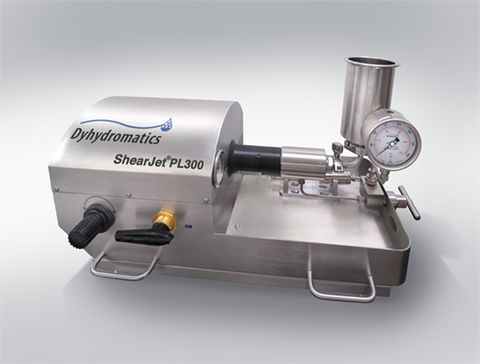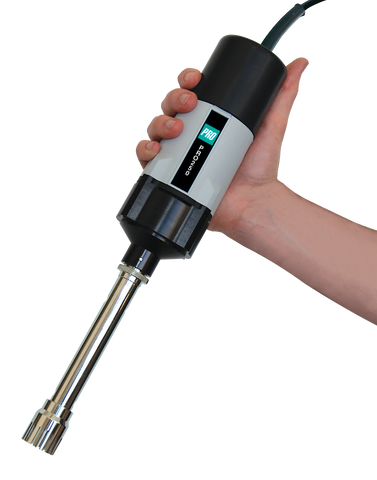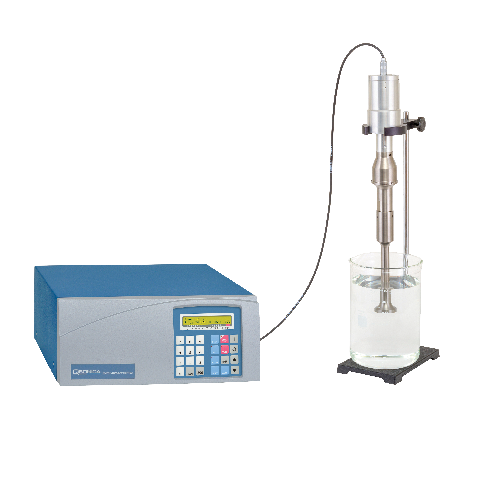In recent years, the production and consumption of cannabis-derived products for medicinal and health-enhancing purposes has grown rapidly across the US and worldwide (King, 2019). Customers are now able to purchase a wide range of cannabis-derived products in various formulations — from edibles, such as chocolates, gummies, and beverages, to cannabis extracts in vapes, tinctures, or capsules, to creams, lotions and balms for topical application.
Benefits of optimizing cannabis homogenization
As the market for cannabis products has grown, the importance of delivering consistently high-quality, effective products has become clear. A key part of the product manufacture pipeline is homogenization, which involves breaking down the particles in a cannabis-derived solution to a consistent microscopic size.
Homogenization offers a number of significant benefits for the final product. It ensures a uniform consistency of terpenes and cannabinoids in the product, in particular those of cannabidiol (CDB) and tetrahydrocannabinol (THC), the primary active compounds. This leads to a higher potency of effect for less active material, because of the higher bioavailability of THC and CBD.

From the point of view of the consumer, consistent, high-quality homogenization leads to a product that offers a faster response, better appearance and taste, longer shelf life, and more predictable dosing, reducing the risk of under- or over-dosing.
However, cannabis is one of the most difficult samples to homogenize, due to its high oil/resin content. Therefore, choosing the best homogenization method can be challenging.
In this article, we detail the key factors to consider when purchasing a homogenizer, before summarizing the main advantages and disadvantages of the most suitable homogenizer types for cannabis applications.
Factors to consider in choosing a homogenizer
Quality of homogenization
The quality of the final cannabis product depends on obtaining a uniform consistency after homogenization. If the aim is to maximize the potency of the product, an ultrasonic homogenizer or high-pressure homogenizer are the most appropriate choice, because they can break down the sample into extremely small “nanoparticles” less than 1 micron in size, which are capable of forming a nanoemulsion.
Nanoemulsions comprise microscopic droplets of water containing cannabinoids, which are often mixed with a surfactant (emulsifier) to prevent separation and improve shelf life. Crucially, nanoemulsions markedly increase cannabinoid bioavailability by facilitating their absorption across the blood-brain barrier and into neurons, where they can exert their psychoactive effects.
Formulation of cannabis product
The requirements for the final product in terms of its potency, viscosity, and consistency affect the choice of homogenizer. For liquid products, including beverages and tinctures, it is crucial to obtain ultrafine particle sizes to ensure a consistent and stable emulsion. Therefore, an ultrasonic homogenizer or high-pressure homogenizer capable of producing a nanoemulsion may be the most suitable. In contrast, for solid edibles such as capsules or tablets, homogenization of the sample to particles of more than 1 micron in size using a rotor-stator homogenizer may be adequate.

Sample contamination
Contamination is a risk for all products intended for human consumption. In the US, cannabis-derived products must be tested in state-licensed laboratories to quantify their potency and to screen for contaminants, including residual solvents, pesticides, mycotoxins, heavy metals, and bacteria.
Care should therefore be taken during sample processing to maintain a clean processing environment, according to Good Manufacturing Practice, and to avoid airborne contamination. This can be simplified by using a closed homogenizer system, such as a high-pressure homogenizer. In addition, the homogenization method itself must not introduce contaminants, even at trace levels, for example from the homogenizer equipment or its media, which can be an issue with bead-mill homogenizers and ultrasonic homogenizers.
Sample volume and scalability
Key variables in choosing a homogenizer are the quantity of sample and the rate at which it needs to be processed. Broadly, sample processing can be divided into lower-volume batch processing and higher-volume flow-through processing.
Batch processing
In cases in which cannabis samples only need to be processed in small batches in the mL to L range, a lab-scale benchtop homogenizer or even a handheld homogenizer may be the best option. Batch processing of cannabis-derived samples typically uses a rotor-stator homogenizer or an ultrasonic homogenizer.
In terms of batch size, the upper limit for larger homogenizer models is typically on the order of 20–30 L — for example, the Q2000 Sonicator (an ultrasonic homogenizer) can process up to 20 L, while the PRO400 Benchtop Homogenizer (a rotor-stator homogenizer) can process up to 30 L. However, the practical limits for good-quality homogenization are likely to be much lower for cannabis-derived samples, so the upper limit on batch size should be established empirically.
If you are considering using a rotor-stator homogenizer, check out our article on scaling up a rotor–stator homogenization process.
Flow-through processing
If the manufacturing pipeline requires the processing of much larger volumes continuously, then operations can be scaled up using a flow-through system capable of continuous homogenization.

The DyHydromatics PL300 ShearJet High-Pressure Homogenizer enables continuous, flow-through processing of cannabis-derived solutions.
If you are looking to process large volumes of sample then a high-pressure homogenizer is the obvious choice. Flow-through processing is the typical mode of operation for this class of homogenizer, enabling you to set up a homogenization pipeline with relative ease — for example the PL300 ShearJet High-Pressure Homogenizer can process 500 mL/min. However, check product specifications carefully, as some models such as the ShearJet HL60 Electric Hydraulic High Shear Homogenizer are designed for small batch processing.
Some ultrasonic homogenizers can be adapted for flow-through processing using appropriate accessories — for example, the Q2000 Sonicator can be fitted with High Volume Flocells, which offer a maximum processing speed of 20 L/min in principle, although in practice the processing rate may need to be much lower to obtain good-quality homogenization.
However, because the ultrasonic probe must vibrate extraordinarily rapidly to homogenize the cannabinoid sample (usually between 20kHz and 40kHz), higher-volume ultrasonic systems utilizing larger probes often cannot handle higher viscosities without overloading. This can be extremely limiting for cannabinoid homogenization applications. Reducing the viscosity sufficiently often requires heating, which can cause sample degradation, and/or dilution, which increases the volume of sample that needs to be processed to obtain the same amount of final product.
Overall, whether you are optimizing your processing protocol for batch or flow-through processing, it is important to thoroughly test and refine the protocol first before settling on an approach that best ensures the quality of the final product.
Cost to purchase and run
The cost of purchasing the homogenizer can be a crucial factor, especially for commercial operations in which profit margins need to be considered. Prices can vary by a factor of 10 even within a given homogenizer type, but as a rule of thumb, rotor-stator homogenizers tend to be the cheapest, ultrasonic homogenizers slightly more expensive, and high-pressure homogenizers the most expensive. For certain models, you may also need to purchase accessories such as stands or probes in order to set up the homogenizer appropriately.
In addition to the purchasing cost, it is important to account for the costs of running the homogenizer and replacing parts. Both rotor-stator and ultrasonic homogenizers use probes, which eventually wear out and need to be replaced. The lifetime of a probe will obviously be shorter if the homogenizer is under continuous or near-continuous usage. However, probe lifetime can be maximized by using an appropriate probe for the sample processing requirements — make sure to check the manufacturer’s specifications for different probes, which should include details such as the range of sample volumes the probe is suitable for.

If you are processing small batches and want an economical choice, then a handheld rotor-stator homogenizer such as the PRO Scientific PRO250 Homogenizer could be a good option.
Finally, check the duration and terms of the warranty for the homogenizer, so that you are aware of what costs you may need to cover over a shorter or longer timescale.
Chemical composition
Heating of the sample during homogenization may be an issue if the active THC content of the final product needs to be kept below 0.3%, in line with US federal law. To achieve this, the temperature should be maintained below 35°C to prevent decarboxylation of inactive tetrahydrocannabinolic acid (THCA) to THC (Morehouse et al., 2021).
If heating is an issue, rotor-stator homogenizers are a good option due to their moderate to low heating effect on the sample. However, sample overheating can be prevented in ultrasonic homogenizers and high-pressure homogenizers using a temperature sensor and/or active cooling system. These features may be built in or can sometimes be added by purchasing accessories that provide this functionality.
Ease of use, cleaning, and maintenance
Ease of use includes the difficulty in setting up the homogenizer, but also the requirements for maintaining its day-to-day operation. In general, rotor-stator homogenizers and ultrasonic homogenizers are designed with an intuitive form factor, making them relatively easy to handle and set up (assuming you have the correct probe, stand, etc.). High-pressure homogenizers may require a longer lead-in time for set up and training, as well as being more unwieldy to work with due to their size and weight.
On an ongoing basis, all types of homogenizer require careful maintenance, such as inspecting parts for wear and tear, lubricating bearings or rotating elements, and calibrating equipment functions such as flow rate and homogenization power. Faulty parts, such as damaged probes or worn-out motor brushes, should be replaced. These maintenance tasks can be facilitated by establishing a regular maintenance routine and by following the manufacturer’s guidelines carefully.

In addition, homogenizers require regular cleaning to maintain the optimal functioning of the equipment and avoid cross-contamination of samples, which is particularly important for cannabis-derived edibles. In the case of high-pressure homogenizers, this typically involves pumping a cleaning solution (e.g. NaOH followed by distilled water) through the system, while ultrasonic and rotor-stator probes need to be regularly removed and cleaned.
Thorough cleaning is crucial for cannabis-derived products, due to the oily and potentially viscous nature of the sample lending itself to residual build-up. This is less a concern with ultrasonic probes, however, as they are completely solid components with no joints or orifices exposed to the product.
Check out our article on cleaning and maintaining a rotor-stator homogenizer, if you intend to use this type of homogenizer.
Pros and cons of homogenizer types for cannabis applications
Rotor-stator homogenizers
The homogenizing elements within rotor-stator homogenizers consist of a rapidly rotating inner shaft (the rotor) within a static metal tube (the stator).
As the sample being homogenized enters the narrow space between the stator and the rotor, it is exposed to a high velocity gradient and powerful shear forces resulting from the difference in fluid velocities adjacent to the rapidly rotating rotor vs. the stationary stator. These shear forces break down the sample into fine particles in the micron range.

The IKA Ultra-Tarrax T25 is a popular handheld rotor-stator homogenizer that can process up to 2 L batch volumes (depending on sample viscosity).
The relative advantages and disadvantages of rotor-stator homogenizers for cannabis product processing can be summarized as follows:
Advantages
- Easy to use, clean, and maintain
- Relatively inexpensive to buy and operate
- Applicable to samples of varying viscosities (although this affects processing volume, see below)
- Low sample heating in general, if this is a concern for cannabis decarboxylation (which raises the THC content)